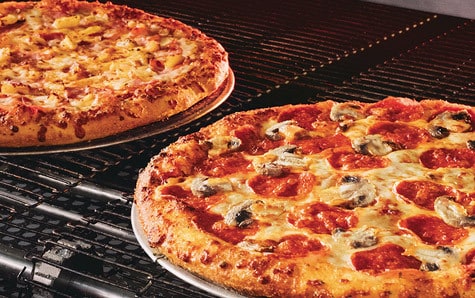A taste of Heineken
The sun dances across the grass-thatched bar as freshly bronzed vacationers cradle ice-cold Heinekens, breathing in salty air and malty aromas.
The scene is simple. But the behind-the-scenes operations to make sure Heineken devotees get the brew they want — when they want it — are anything but.
Dont forget to bring your towel
Star quality
Heineken distributes nearly 50 billion liters (13 billion gallons) of beer every year to urban metropolises and far-flung destinations around the world — and every single bottle must have the same high quality and refreshing taste that beer buffs love. Meeting those expectations at such tremendous scale requires fine-tuned precision across all of Heineken’s processes, from the barley field to the bottling line to the bar top.
To keep everything across brewing, supply chain and financial processes running smoothly around the clock, Heineken relies on the Splunk platform for visibility into these expansive systems.
“Without integration, warehouses can’t stay stocked, orders can’t be placed and customers don’t get their beer.”
Guus Groeneweg
Global Product Owner for Digital
Integrations, Heineken
Global Product Owner for Digital
Integrations, Heineken

Enter the digital integrations team — the thread that stitches together all these disparate systems, enabling real-time data exchange between Heineken’s five middleware platforms and 4,500 applications. They cover everything from making sure that a forklift driver’s iPad has the right data to put the right pallet in the right truck, to helping systems process credit card payments in a fraction of a second.
“Without integration, warehouses can’t stay stocked, orders can’t be placed and customers don’t get their beer,” says Guus Groeneweg, global product owner for digital integration at Heineken.
A single instance of downtime for one of Heineken’s five foundational integration platforms could halt production and distribution altogether. Groeneweg recalls a situation within the first few weeks of his role when one of the platforms had eight hours of downtime: “Seventy countries relied on this platform, and we had everything from pallets stacking up at the end of the packaging line to trucks in multiple countries waiting because the picking list couldn’t be printed for the forklift drivers. That experience taught us that we needed to increase transparency of the black box we call integration — so we turned to the Splunk platform to better understand our data and systems.”
Journey of a sales order
Heineken’s XOMI dashboard: eXtreme Observability & Monitoring for Integration
Innovation is brewing
“We sit on a pot of gold of data,” Groeneweg says. That means using weather APIs to predict warm weather and prepare for spikes in demand. Using insights to determine the best pricing strategy. Using warehouse data to optimize stock levels and delivery timing.
With Splunk and specialized integration partner Rojo Consultancy, Heineken teams can access, understand and act on all their data. “Rojo helps us connect more than 5,000 applications, and Splunk allows us to be transparent with this data so we can help the entire company use data to their advantage,” says Groeneweg.
This goal sparked innovation for Groeneweg and his team … and XOMI was born. Standing for eXtreme Observability of Monitoring Integrations, XOMI (pronounced “show me”) is a Splunk Cloud dashboard that translates real-time integration data into business value for teams around the world — from finance in Poland to sales teams in India.
“With Splunk, we easily capture all log files and analytics for each of our 25 million monthly messages sent between applications,” Groeneweg says. “Splunk Cloud Platform translates all that raw data into transparent, actionable insights that teams across Heineken use to resolve operational issues and improve performance.”
As a result, the number of incidents has plummeted across teams and countries, helping Heineken infuse quality into every bottle, process and customer interaction.
“We never realized what value it would bring to get these insights,” Groeneweg says. “Splunk Cloud Platform now sends a Nigerian brewery manager an automated alert, saying, ‘One of your packaging systems isn’t working correctly, and you’ll have a problem at the end of your packaging line in seven minutes.’ These machine learning capabilities through Splunk are helping us actually prevent incidents, which is next level.”
The best-connected brewer
There was no shortage of breweries in the 1800s. But Heineken is one of the few that are still around — and one of the only to still be a household name.
To stay competitive, Heineken has thoughtfully adapted its strategy throughout the generations — entering new global markets, shifting to a cloud-first mindset and launching its EverGreen strategy, aimed at future-proofing the business and driving resilience.
“We’re evolving to become the best-connected brewer — and Splunk helps show us where things go right and wrong across markets so we have both global transparency and local responsibility.”
Ronald den Elzen, Chief Digital & Technology Officer, Heineken
As part of this initiative, Heineken has announced an ambitious goal: Become the world’s best-connected brewer.
To succeed, Heineken must connect with its customers — bar owners, retail buyers, distributors, thirsty consumers and beyond — by building seamless digital interactions. Achieving this mission demands a forward-thinking approach, especially with the target to have digital B2B platforms account for 10 billion euro in revenue by 2025.
As it moves forward, Heineken’s partnership with Splunk is helping uncap new opportunities for frontend digital experiences and backend efficiencies alike so everyone — whether in business suits or bathing suits — can enjoy Heineken quality wherever and whenever they want.















